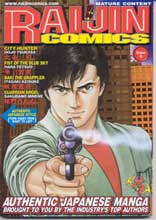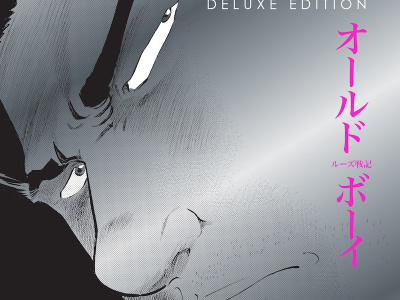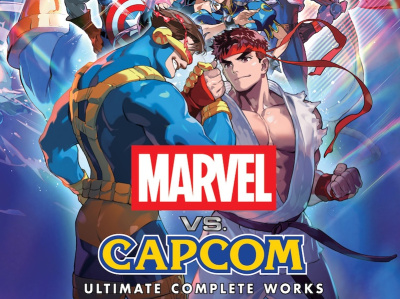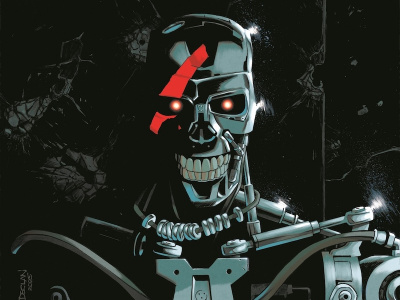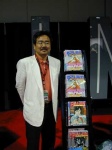
We've earlier reported on the planned release of Raijin Comics, a weekly manga anthology, in the US (see 'Gutsoon! To Launch First Weekly US Manga Anthology'). At the recently concluded Anime Expo (see 'Growing Pains at Anime Expo'), we were able to interview Nobu Horie, Chairman of Gutsoon! parent Coamix Inc. and Sam Humphries, Gutsoon Consulting Editor, to get more details about the planned launch and other Gutsoon plans. Horie is a former Senior Editor of Shonen Jump and one of the founders of Coamix. Gutsoon distributed Raijin #0 at the show. We spoke to Horie through a translator.
We've compared Coamix to Image, because the creators left a larger company to control their own destinies to a greater degree. Is the comparison to Image Comics a fair one?
Horie: Yes.
Were the reasons for starting the company primarily creative or financial?
Horie: The creative side was definitely larger. How the Japanese industry is structured is that there's a publishing house, and comics is just one division of the larger company. No matter how much comics raise money financially, there isn't any guarantee of that profit going back into that comic department.
Earlier you mentioned that creative issues were primary; that sounds more financial.
Horie: It actually goes hand in hand because you are not able to produce a great product without the backing of finances. So in order to produce something great, we needed the money. That was the reason, the driving force.
To paraphrase -- it gives greater resources to purse the creative vision?
Horie: Yes
Were there any other issues in terms of creative control that were issues in the creation of the company?
Horie: Actually, there weren't problems. We were able to go forward with our ideas step by step.
So it was really getting the resources back from the work in order to pursue additional ventures?
Horie: Yes.
I'm interested in the decision to pursue a weekly. The US market has been unkind to weekly comics in the past. Obviously it takes far more resources to launch a weekly than a monthly, so it's a bigger risk. Why did the company feel it's worth that risk?
Horie: Traditionally even in Japan, these weekly anthologies don't necessarily make money. So the reason to pursue such a medium is the fact that you're able to run a variety of stories and you can do surveys. In Japan you have surveys to see what readers really liked out of each issue, and from that they produce the graphic novel, they decide which ones will become graphic novels, and from the sales of those you make a profit.
That's a good explanation for why it's an anthology, but why weekly instead of monthly?
Horie: All the hits in Japan started in weekly magazines, so it's our desire to have American readers get into the habit of reading the weeklies and find out what's interesting about that and have that genuine experience. And obviously in America we'll do surveys weekly and if the response is not positive, we will reconsider the format.
What channels are you expecting to distribute to?
Humphries: We're only ready to confirm one channel of distribution, and that's subscriptions. We're exploring a number of options for distribution, some traditional and some non-traditional, so I can say that you will be seeing Raijin Comics in places where you wouldn't normally expect to see manga.
What about the places we would normally see them?
Humphries: What about them?
Are you going to sell to Diamond?
Humphries: It is too early to say yes or no, but we do understand the importance of the direct market.
What did you base your 15,000 copy target on if you don't have distribution arranged?
Humphries: We based our 15,000 target on research on how various other magazines in the industry have sold in the past, and we've set that as a goal. We're going to pursue distribution opportunities based on what we want to do, not necessarily on what is obvious.
Is anybody else doing 15,000 subscriptions? For example, is Animerica?
Humphries: I wouldn't want to say for Animerica. I can say that 15,000 is not our goal for subscriptions.
Our retailer audience is going to know how to buy it. Will you be selling direct to retailers?
Humphries: No. Without saying too much too soon, I think retailers will be able to buy Raijin Comics the way it is already comfortable for them.
The size of the publication is neither fish nor fowl by American standards, between comic size and magazine size. Why was that size chosen -- is that the size it is in Japan?
Humphries: The size was chosen based on the variety of anthology formats in Japan. The desire is to provide a very genuine manga experience in America for the otaku to enjoy but also as an accurate reflection of the way the work appears in Japan.
Would it be fair to say that the creative issue of having the work appear as it is in Japan was more important than the display issues that you might encounter because of the size?
Humphries: We certainly don't discount display issues, but creative issues are very important. We want the manga to appear as unchanged as possible while still translating it. In terms of display issues and what is the norm in the industry, we very much respect what has come before us but we feel that any industry can use a little experimentation. If the format isn't popular we're happy to change it.
When will your first collections be out?
Horie: I think it will be in October or November of this year. It will probably be Fist of the North Star, and it will be in full color. It may be in the American size.
In bookstores size is probably less of an issue because they're already used to dealing with a variety of formats.
Horie: The reason why [Raijin] is still in the Japanese size is to provide the genuine manga experience, and because my friends have said, 'Keep it this way,' but if the audience says they would rather have it in the American format then that will be considered and changed.
When you say 'friends,' you mean artist friends?
Horie: Yes, the original artists.
Humphries: So with regard to books, we will be releasing Fist of the North Star directly to books, and collections of stories from Raijin Comics will follow.
So does that mean that the same material will appear in periodical format after it appears as a collection?
Humphries: No. Fist of the North Star will not appear in Raijin Comics. Fist of the Blue Sky, which is the prequel, will appear in Raijin Comics. We're not that revolutionary (laughter).
One issue for retailers is that they will have to estimate their demand on many issues before they see their results on the first one. Do you have any marketing plans to address that issue?
Humphries: Absolutely. Marketing to retailers is very important and we want to go beyond just advertising in retailers' faces. Relationships with retailers are very important, directly hearing from retailers on Raijin Comics and our plans before they come out are very important to us. Some things that they have concerns about, they may have to wait and see, some things we may change immediately based on their concerns, but we want to have a very close relationship, we want to know how we can help the retailers sell our product.
I was thinking more about returns, or selling Raijin #0 in with a gap before the first issue, because retailers don't want to bet on twelve issues before they see the results on the first one.
Humphries: I hear that. That's a good idea. We basically want to be available to hear concerns that they may have. We will abide by industry standard practices and terms of ordering, shipping, and so on.
There is no industry standard for weeklies.
Humphries: Retailers will be finding their way in terms of ordering and selling a weekly, and we will be finding our way in terms of selling a weekly.
Are there any plans to distribute issue #0 through retailers?
Humphries: We have no plans to do so, but if there's demand we'll fill it.
Where would they buy it?
Humphries: Through distribution channels that they're previously comfortable with.
So will your efforts to open distribution channels begin with issue #0 or with your full launch?
Humphries: Issue #0 will be available to retailers for sure.
Can you tell me how many you printed?
Horie: 400,000.
You must be planning to do heavy sampling beyond this show then.
Humphries -- very much so.
Where?
Humphries: Other shows, Comic-Con, they will be available to distributors, without saying too much.... We'll also be doing promotions with other businesses that appeal to the same marketplace.
Are you talking about retailers, distributors?
Humphries: Distributors and companies that sell other things (not manga) to the same marketplace.
Would video retailers be an example?
Humphries: That would be a good example, as well as grass roots movements to distribute these to anime clubs in universities across the country, as another example.
Horie: We will also be distributing some through Sega. We have a partnership, joint venture, with Sega.
Do you have games based on some of these properties?
Horie: Of course.
So will they be sampled with games?
Horie: The timing may be off. The game may appear before the manga appears, or it may not even appear in Raijin, but yes, the medium will be used. It will be the first-rate power behind games, it's more popular, so whatever is produced through the games will become popular reading. So they will tie in together.
For a lot of the titles in Raijin Comics, in Japan animation has already been done. If it hasn't been released in the US, that's something we would like to do.
So Gutsoon is planning to do videos as well as manga?
Horie: Yes.
Are there any video releases planned at this point?
Horie: We're thinking of releasing the Fist of the North Star next year in February or March.
Viz recently announced that they will be releasing an American version of Shonen Jump. Do you regard this as a positive or a negative for your launch?
Horie: We're very happy about that. We know the American market is not easy to penetrate, so any other things such as Viz coming out with this we view as additional support. We appreciate the fact that they're coming out together and we believe it will be a stronger force. We've previously spoken to Shogakukan and they agree that this is for the better.



